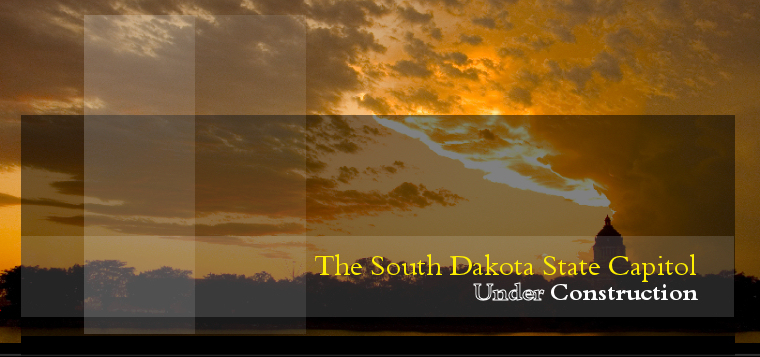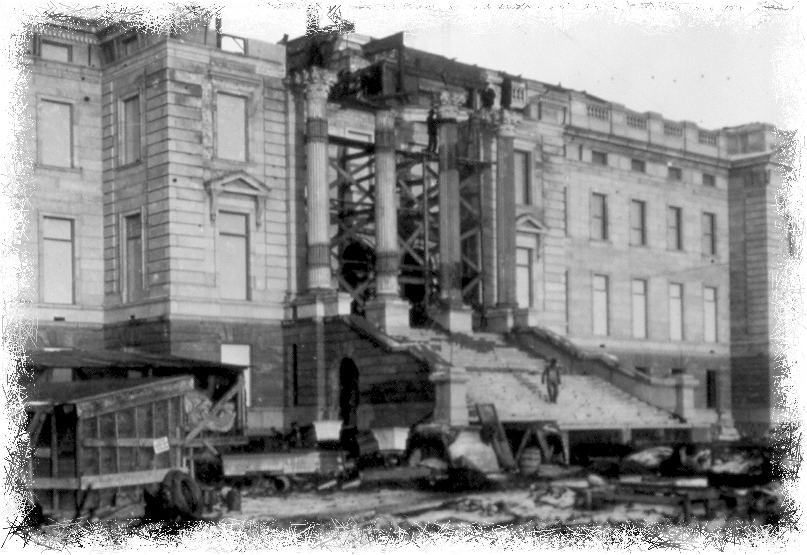|
1908 marked one of the most aggressive times of construction, and the progress made was considered remarkable. From the level of the foundation, a labor force averaging 65 men erected the structure to a point level with the peak of the roof.
According to Dakota West Magazine (Winter 1978), these 65 workers using three huge derricks, set about 100,000 square feet of stone. 2.5 million bricks were laid. 300 tons of of iron were set in place and 70,000 cubic feet of concrete poured. Work was suspended on December 19th, and with the exception of a few men working on the inside during the winter, operations were not stated again until March 1909.
At that time, the derrick was raised to a point level with the tower deck, and the erection of the dome began.
This circular work was slow, but considering it involved 100 tons of iron, 350,000 bricks, and thirty cars of cut stone, it amazed the town that the last stone was set on June 25th, 1090 - 1 year to the exact day that the corner stone was set.
From there, the curved steel rafters were raised, and the process of concreting and enclosing the dome began.
While all this was taking place, there was much ado besides the obvious external construction. in August of 1908, the Federation of Womens's Clubs of South Dakota made the following resolution:
RESOLVED that the Federation of Womens's Clubs of South Dakota, earnestly favors provisions by the legislature, and capitol commission for interior finish and decoration of the new state capitol , befitting the wealth, culture and dignity of a great commonwealth. That the provision for interior decoration should not be less than five percent of the entire cost of the structure and that the mural decorations should be made only by American Artists of the highest skill and
repute; that to this end, if it be deemed expedient, we should favor a small amount of decoration of the highest order than to accept anything less than the best.
Dayton Canaday, director of the South Dakota State Historical Society writing in his 1970's pamphlet "State Capitol of South Dakota" that "The Capitol Commission finally decided on the modest but effective plan of Mr. W. G. Andrews Decorative Co. of Clinton, Iowa. He had secured commitments. from Mr. Edward Simmons to supply five pictures. Mr. Charles Holloway, three pictures; and Mr. Edwin Howland Blashfield, one picture.
As Louise Young's Dakota West article attested "The suggestion of the women's clubs that a very little of the best art is preferable to a great amount of poor art became the keynote of the campaign of art propagandists and was echoed from every corner of the state."
At a much later date, the painting commissioned of the most celebrated artist eventually became the most controversial.
Copyright 2007 South Dakota Bureau of Administration | Frontpage-Templates.org | E-Mail BOA Webmaster



